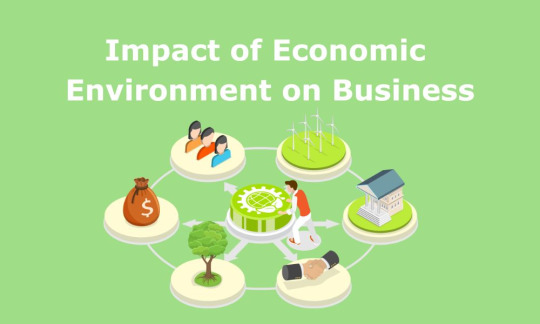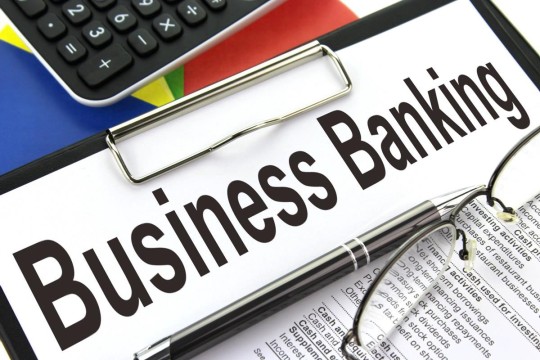#marketcondition
Link
#budgeting#Californiarealestate#CarieWebber#ConejoValley#curbappeal#expertadvice#firstimpressions#hiddencosts#homeimprovement#homeinvestment#homepresentation#homerepairs#homeselling#homestaging#KevinWebber#landscaping#localmarket#marketconditions#marketing#negotiation#pricingstrategy#propertyvalue#Realestate#sellerconsultation#sellertips#seller'smarket#sellinggoals#sellingtimeline#WestlakeVillage
0 notes
Text
Activist Investor Boosts Japanese Medical Company's Future Amidst Competition and Challenges
#activisthedgefund #activistinvestors #competition #corporatelandscape #costcuttingmeasures #COVID19pandemic #cuttingcosts #decliningsales #divestingnoncoreassets #endoscopebusiness #innovativestrategies. #investoroptimism #Japanesehealthcareindustry #Japanesemedicaldevicecompany #marketconditions #newgrowthopportunities #OlympusCorp #outsourcingproduction #revenuestreams #streamliningoperations #ValueActCapital #workforcereduction
#Business#activisthedgefund#activistinvestors#competition#corporatelandscape#costcuttingmeasures#COVID19pandemic#cuttingcosts#decliningsales#divestingnoncoreassets#endoscopebusiness#innovativestrategies.#investoroptimism#Japanesehealthcareindustry#Japanesemedicaldevicecompany#marketconditions#newgrowthopportunities#OlympusCorp#outsourcingproduction#revenuestreams#streamliningoperations#ValueActCapital#workforcereduction
0 notes
Text
Is Now the Right Time? Key Signs You Might Want to Hold Off Selling Your Home - Egemen Mustafa Şener
If you find yourself constantly second-guessing the decision to sell your home, it might be a sign to hit pause. Are you emotionally attached to your property? Do market conditions seem uncertain? Perhaps major renovations are pending, or you're facing a sudden life change. Taking the time to assess these factors can ensure you make a well-informed choice. Remember, timing is everything in real estate!
Egemen Mustafa Şener

#egemenmustafaşener#egemen#RealEstateInsights#HomeSellingTips#TimingIsKey#MarketConditions#PropertyDecisions#EmotionalAttachments#RealEstateAdvice
0 notes
Text
#SEBIRegulations#MarketImprovement#SEBIImpact#MarketConditions#FinancialStability#SEBIRules#EconomicGrowth#InvestmentEnvironment#StockMarketReforms#SEBICatalyst
0 notes
Text
What Is The Impact Of Economic Environment On Business?: Learn In-Depth

The economic environment wields immense influence over the fate of businesses. It serves as the unseen hand that shapes the opportunities and challenges faced by organizations in the modern world.
From fluctuations in market demand to the impact of government policies, understanding this intricate ecosystem is pivotal for business success. In a globalized landscape, economic conditions ripple across borders, affecting consumer behavior, competition, and profitability.
This essay explores the pivotal role of the economic environment in shaping business strategies and outcomes, highlighting the need for vigilant monitoring and strategic adaptation to thrive in an ever-evolving economic climate.
Introduction To Economic Environment
The economic environment is a critical factor that significantly influences the performance and success of businesses.
It encompasses a wide range of economic factors and conditions that affect how companies operate, make decisions, and plan for the future.
Definition Of Economic Environment
The economic environment refers to the conditions and forces within an economy that impact businesses' ability to thrive.
It includes factors like economic growth, inflation rates, interest rates, and the overall stability of the financial system.
Thinking about higher study abroad? Afraid about finance?
International student loans can solve your problem.
Interplay Between Economic Environment And Business
Businesses don't exist in isolation; they are an integral part of the broader economic ecosystem.
Changes in the economic environment can have far-reaching effects on business operations, revenue, and profitability.
The Role Of Economic Factors In Business Success
Economic factors can either propel or hinder business success. Understanding and effectively navigating these factors are essential for business leaders and entrepreneurs looking to thrive in a dynamic marketplace.
Are you thinking about taking loans? Before taking a loan anyone should learn about the nature of the loan.
Why The Economic Environment Matters
The economic environment matters for several reasons:
Linking Economic Trends And Business Performance
The correlation between economic trends and business performance is well-established.
For example, during periods of economic growth, businesses tend to see higher demand for their products or services, while economic contractions can lead to decreased consumer spending.
Long-Term Vs. Short-Term Implications
Economic conditions can have both short-term and long-term implications for businesses.
Short-term changes might require immediate adjustments, while long-term trends can shape a company's strategic direction for years to come.
Factors Influencing The Economic Environment And Business
The economic environment is shaped by a myriad of factors that profoundly impact businesses. In this brief, we'll explore the key influencers of this dynamic relationship.
Macroeconomic Factors
Macroeconomic factors are the broad economic indicators that impact the overall economy and, consequently, businesses. They include:
Gross Domestic Product (GDP): A measure of a country's economic output.
Inflation: The rate at which prices for goods and services rise.
Interest Rates: The cost of borrowing money.
Government Spending: Public sector expenditure that can influence economic growth.
The Role Of Government Policies
Government policies, such as fiscal and monetary policies, play a crucial role in shaping the economic environment.
For example, tax policies can affect business profitability, while monetary policies influence compound interest rates and inflation.
Impact Of Economic Cycles (Boom, Recession, Depression)
Economic cycles are a natural part of the economic environment. Understanding these cycles helps businesses prepare for economic downturns, seize opportunities during upturns, and navigate through periods of uncertainty.
Exchange Rates And International Trade
For businesses engaged in international trade, exchange rates are a significant macroeconomic factor.
Fluctuations in exchange rates can affect the cost of imports and exports, impacting a company's competitiveness and profitability.
Microeconomic Factors
Microeconomic factors focus on the dynamics within specific industries or markets. They include:
Supply and Demand: The forces that determine product prices.
Competition and Market Structure: The number and nature of competitors in a market.
Consumer Behavior and Preferences: What drives consumer choices.
Market Dynamics: Supply And Demand
Understanding the principles of supply and demand is fundamental for businesses. It influences pricing strategies, production levels, and inventory management.
Competition And Market Structure
Businesses must analyze the competitive landscape to identify opportunities and threats.
Market structure, whether monopolistic or competitive, affects a company's pricing power and market share.
Consumer Behavior And Preferences
Studying consumer behavior and preferences helps businesses tailor their products and marketing strategies to meet customer needs effectively.
Socioeconomic Factors
Socioeconomic factors reflect the broader societal context in which businesses operate. Key factors include:
Income Distribution: How wealth is distributed in a society.
Demographic Trends: Changes in population size and composition.
Cultural and Social Norms: The values and behaviors of a society.
Income Distribution
Income inequality can affect consumer spending patterns and impact which products and services are in demand.
Demographic Trends
Changes in demographics, such as an aging population or shifts in urbanization, can open up new market opportunities or pose challenges for businesses.
Cultural And Social Norms
Understanding cultural nuances and societal values is crucial for businesses operating in diverse markets.
It influences advertising, product design, and corporate social responsibility initiatives.
Technological Advancements
The Digital Age And Business
The rapid advancement of technology has transformed the business landscape. The adoption of digital tools and platforms has revolutionized how companies operate and interact with customers.
Automation And Efficiency
Automation technologies, such as AI and robotics, have the potential to improve efficiency, reduce costs, and enhance productivity.
Innovation And Market Adaptation
Innovation is a key driver of competitiveness. Businesses that embrace technological advancements can gain a significant edge in the market.
Challenges Of Rapid Technological Change
While technology offers opportunities, it also presents challenges such as cybersecurity threats and the need for ongoing skills development.
The Consequences Of Economic Environment On Businesses
The economic environment has a profound impact on businesses, influencing their growth prospects and posing challenges that demand strategic responses.
In this section, we will explore the opportunities and threats that arise from the economic environment and examine strategies for effectively adapting to economic changes.
Opportunities And Threats
Opportunities and threats are the twin forces that shape a business's path. In this concise overview, we'll explore their impact on organizational success and sustainability.
Identifying Business Opportunities In A Favorable Economic Environment
During periods of economic prosperity, a range of opportunities emerges for businesses:
Market Expansion: Favorable economic conditions often coincide with increased consumer spending. This provides businesses with the chance to expand into new markets or target previously untapped customer segments.
Investment and Innovation: Economic upswings typically offer easier access to capital and favorable financing terms. Businesses can leverage these conditions to invest in research, development, and innovation, enhancing their competitiveness. Foreign direct investment is also a good source of business opportunities.
Mergers and Acquisitions: A strong economy encourages M&A activities as companies seek to consolidate market positions, diversify portfolios, or enter new markets.
Talent Attraction: Low unemployment rates during economic booms make it easier for businesses to attract top talent, strengthening their workforce.
Navigating Business Threats During Economic Downturns
Economic downturns present a host of challenges that require prudent management:
Cost Optimization: In challenging economic times, businesses must critically examine their expenses. Identifying areas for cost reduction without sacrificing quality or customer service becomes crucial.
Cash Flow Management: Managing cash flow becomes paramount during downturns. Businesses must ensure they have sufficient working capital to sustain operations, even if revenues decline.
Customer Retention: Customer loyalty is a competitive advantage when the economy falters. Businesses should focus on delivering outstanding customer service and value to retain their customer base.
Diversification: Diversifying product lines or expanding into related markets can help mitigate the impact of economic downturns on overall performance.
Debt Management: Reducing debt levels, or refinancing high-interest debt, or avoiding debt can alleviate financial strain during economic crises.
Supply Chain Resilience: A robust and resilient supply chain is essential. Businesses should evaluate and strengthen their supply chain to ensure the uninterrupted flow of goods and materials, even in the face of disruptions.
Case Studies: Successes And Failures
Examining real-world case studies provides invaluable insights into how businesses have navigated the opportunities and threats stemming from the economic environment.
Success stories illuminate effective strategies, while failures serve as cautionary tales.
Strategies For Adapting To Economic Changes
Adapting to economic changes is a critical skill for businesses. In this brief exploration, we'll delve into key strategies for resilience and growth in dynamic economic landscapes.
Adaptation Vs. Resilience: Which Is More Important?
Balancing adaptation and resilience is a critical consideration:
Adaptation: Agile businesses can swiftly pivot to capitalize on emerging opportunities, respond to shifting consumer preferences, and outmaneuver competitors.
Resilience: Resilient businesses fortify themselves to withstand economic downturns. They maintain solid financial positions, diversify revenue streams, and have contingency plans in place.
The optimal balance between adaptation and resilience depends on a business's industry, size, and risk tolerance.
Diversification And Risk Management
Diversification is a proven strategy for mitigating risk in uncertain economic environments:
Product Diversification: Expanding the range of products or services offered can reduce reliance on a single revenue source.
Geographical Diversification: Entering new markets with different economic cycles can help balance risk exposure.
Portfolio Diversification: Diversifying investments across various asset classes can protect wealth during economic volatility.
Effective risk management involves identifying potential threats, assessing their impact, and developing strategies to mitigate them.
Strategic Planning And Forecasting
Strategic planning and forecasting are indispensable tools for businesses navigating economic dynamics:
Scenario Planning: Businesses should formulate contingency plans for diverse economic scenarios, enabling swift responses to changing conditions.
Market Research: Regular market research and analysis provide insights into consumer behavior, allowing businesses to proactively adjust their strategies.
Financial Forecasting: Accurate financial forecasting helps businesses allocate resources efficiently and anticipate potential funding gaps.
Role Of Entrepreneurship And Innovation
Entrepreneurship and innovation are instrumental in a business's ability to adapt and thrive:
Entrepreneurship: Entrepreneurs excel at identifying market gaps and creating innovative solutions, making them adept at seizing opportunities.
Innovation: Innovative businesses are agile and can pivot to meet changing market conditions and evolving customer preferences effectively.
The economic environment's impact on businesses is significant, encompassing a spectrum of opportunities and threats.
Recognizing and capitalizing on these opportunities while effectively mitigating threats demands a blend of strategic vision, adaptability, resilience, and a commitment to innovation.
Successful businesses not only navigate the dynamic economic landscape but also emerge stronger and more competitive, regardless of the economic challenges they encounter.
Case Studies: Real-World Examples Of Economic Environment Impact
Real-world case studies provide invaluable insights into how the economic environment can shape businesses.
In this section, we'll examine concrete examples of these impacts, offering practical lessons and perspectives from the business world.
Case 1: The Great Recession (2008)
How Various Industries Were Affected
Different industries experienced varying impacts during the Great Recession, from the housing market crash to the banking sector's collapse.
Lessons Learned By Businesses
Businesses that adapted their strategies survived and even thrived post-recession, offering valuable lessons for future economic downturns.
Policy Interventions And Their Effects
Government policies, such as stimulus packages and bailouts, played a significant role in stabilizing the economy and aiding struggling businesses.
Case 2: The COVID-19 Pandemic (2020)
Rapid Economic Changes
The COVID-19 pandemic triggered swift and profound economic changes. Lockdowns and travel restrictions disrupted supply chains and altered consumer behavior.
Industries That Thrived Vs. Struggled
Some industries, like e-commerce and healthcare, experienced unprecedented growth, while others, such as hospitality and tourism, faced severe challenges.
Business Innovations During Crisis
Many businesses innovated in response to the pandemic, pivoting their operations to produce essential goods or shifting to remote work models.
These adaptations showcased the resilience and creativity of the business community.
Preparing Your Business For Economic Uncertainties
Preparing a business for economic uncertainties is akin to fortifying it against unpredictable storms.
In this article, we'll explore strategies and measures that bolster resilience in the face of economic turbulence.
Building Resilience
Maintaining a strong financial cushion is vital for weathering economic storms. Cash reserves can help cover expenses during downturns and support business continuity.
Diversification can spread risk. Companies that offer a variety of products or services are often better positioned to withstand fluctuations in demand.
Streamlining and securing supply chains can minimize disruptions during economic crises. Businesses must identify critical suppliers and develop contingency plans.
Staying Informed And Agile
Regularly monitoring economic indicators, such as GDP growth, unemployment rates, and consumer confidence, provides early warning signs of potential challenges or opportunities.
Scenario planning involves creating strategies for different economic scenarios, enabling businesses to react swiftly when conditions change.
Utilizing data analytics and business intelligence tools can provide valuable insights into market trends, customer behavior, and emerging opportunities.
The Future Of Business And The Economic Environment
As we look to the future, the relationship between businesses and the economic environment will continue to evolve. Some key considerations include:
Anticipating Future Economic Trends: Staying ahead of economic shifts will remain a priority for businesses seeking sustainable growth.
The Role of Sustainable Business Practices: Environmental and social considerations are increasingly shaping consumer preferences and regulatory environments.
Preparing for the Unknown: Business leaders must remain agile and open to innovation to tackle unforeseen economic challenges.
Conclusion:
The economic environment wields profound influence over businesses, serving as both a catalyst for growth and a source of formidable challenges. Understanding this dynamic relationship is pivotal for business leaders and strategists.
Opportunities emerge in times of economic prosperity, enabling businesses to expand, innovate, and thrive.
Yet, lurking alongside these opportunities are threats, often magnified during economic downturns, which demand agile and proactive responses.
Strategies for adapting to economic changes are the bedrock of sustainable business success.
Balancing adaptation and resilience, diversification, effective risk management, strategic planning, and fostering entrepreneurship and innovation all play pivotal roles in navigating this complex landscape.
Real-world case studies underscore the importance of these strategies, showcasing businesses that have excelled and others that have faltered in the face of economic challenges.
Lastly, preparing for economic uncertainties is not just prudent; it's essential. The ability to weather economic storms through careful financial planning, diversified business models, and robust supply chains is the hallmark of a resilient and enduring business.
In this ever-evolving economic environment, businesses must remain vigilant, adaptable, and innovative to not only survive but to thrive in the face of uncertainty.
FAQs
1. What is the economic environment, and why is it important for businesses?
The economy's conditions and influences affect businesses' operations, profitability, and growth. It's vital for businesses' performance and decision-making.
2. How does a favorable economic environment benefit businesses?
Economic stability, low interest rates, and rising consumer spending are indicative of a good economy. This can increase corporate growth, demand for goods and services, and financial access.
3. What are some common threats businesses face during economic downturns?
Businesses can face lower consumer spending, sales, competition, and financial instability due to decreasing product and service demand during economic downturns.
4. How can businesses adapt to economic changes effectively?
Diversification, cost minimization, financial forecasting, and innovation help businesses adjust to economic changes. These tactics keep businesses flexible amid changing economic conditions.
5. What role does risk management play in addressing economic threats?
Risk management helps businesses discover, assess, and mitigate economic change hazards. It helps firms anticipate and mitigate disasters.
#EconomicImpact#BusinessEnvironment#EconomicTrends#BusinessSurvival#FinancialResilience#MarketConditions#AdaptToChange#EconomicAnalysis#BusinessStrategies#EconomicOutlook
1 note
·
View note
Text
🌍 RemitAnalyst: Your Go-To Platform for Money Transfers 🌍
Are you looking to transfer money from the UK to India? Look no further! RemitAnalyst is here to make your international money transfers a breeze. With our expertise and commitment to providing the best services, we ensure that your hard-earned money reaches your loved ones in India quickly and securely.
💸 Best GBP to INR Exchange Rates 💸
At RemitAnalyst, we understand the importance of finding the best exchange rates to maximize the value of your money. That's why we constantly monitor the currency markets to offer you the most competitive GBP to INR exchange rates. Our goal is to help you get more INR for every GBP you send, so you can make the most of your funds.

#RemitAnalyst#MoneyTransfers#InternationalRemittance#BestRates#TrustworthyService#CustomerSatisfaction#FamilySupport#BusinessTransactions#FinancialNeeds#ContactUs#CustomerSupport#24/7Assistance#ExchangeRates#MarketConditions#CompareAndSave
0 notes
Text
Sell Broken Gold Chain for Cash in Delhi: Can You Still Make Money
Are you looking to sell your broken gold chain for cash in Delhi? If so, you may be wondering if it's even worth the effort. The good news is that you can definitely make money by selling your broken gold chain, even if it's no longer wearable. In this blog, we'll discuss how to sell your broken gold chain for cash in Delhi, and highlight a great option for those who want a hassle-free selling experience with the brand Minsara, including their pickup service.
#GoldFluctuations#MarketConditions#GoldPrice#GlobalMarket#SellGold#GoldChainValue#GoldValue#CurrentGoldPrice#GoldMarket#PriceFluctuations#GoldInvestment#PreciousMetals#GoldJewelry#GoldMarketTrends#GoldPriceFluctuations#GoldChainPrice#SellGoldChain#GoldEconomy#GoldMarketConditions#GoldMarketValue#GoldChainInvestment#GoldPriceVariation#GoldTrading#GoldChainWorth#GoldChainMarket#GoldChainTrends#GoldMarketAnalysis#GoldPriceUpdates#GoldChainSelling#GoldPriceForecasts
0 notes
Link
#activedutyservicemembers#Adjustable-rate#ARMs#budget#conditions#creditscore#downpayment#FederalHousingAdministration#FHA#fixed-rate#fluctuate#highvalue#higherinterestrates#house#interestrate#jumbomortgages#loan#marketconditions#monthlymortgagepayments#mortgage#mortgageinsurance#nodownpayment#property#purchase#terms#underwritingstandards#VA#VeteransAffairs
0 notes
Text
Nerude Mirmire Laghubitta Bittiya Sansth... #Borrowings #Businessnews #Companyperformance #Corelendingactivities #depositcollection #distributableloss #Economicactivities #Economicoverview #EPS #Falgun30 #financial #financialinclusion #financialmetrics #financialreport #financialresults #FinancialStability #Financialstanding #Fiscalanalysis #Fiscalperformance #Fiscalupdate #fiscalyear #Grassrootslevel #growth #Jointtransaction #Laghubitta #loanextension #marketconditions #marketfluctuations #marketperformance #merger #Mergerimpact #Microfinanceinstitutions #Microfinancesector #Mirmire #Nepalifinance #Nerude #NerudeMirmireLaghubittaBittiyaSanstha #Netfeeandcommissionincome #netinterestincome #netprofit #networthpershare #NLBBL #operatingincome #operatingprofit #Operationalexpenses #PaidupCapital #profitability #reservefund #revenuestreams #Stakeholders #standing #Strategicpositioning #sustainability #thirdquarterreport #Valuecreation
0 notes
Video
youtube
Understanding the Recent Increase in Foreclosures and Bankruptcies
The Rise in Foreclosures and Bankruptcies Isn’t a Cause for Concern. In today's real estate market, it's important to stay informed about the trends that affect our industry. One topic that has been gaining attention lately is the increase in foreclosures and bankruptcies. While some may be worried about this uptick, it's essential to put things into perspective.
The Rise in Foreclosures and Bankruptcies: A Closer Look
The rise in foreclosures and bankruptcies isn't necessarily a cause for concern. Instead, it indicates that the market is gradually returning to more normal levels. As the economy experiences fluctuations, it's natural to see occasional increases in these types of financial events.
Understanding the Market Dynamics
To gain a better understanding of what's happening in the market and how it might impact your real estate goals, it's crucial to stay informed. If you have questions or concerns about these trends or any other aspect of the real estate market, I'm here to help.
Let's Connect and Navigate the Market Together
Don't hesitate to reach out if you have any questions or if you're looking for guidance on your real estate journey. Together, we can navigate the current market conditions and work towards your goals. Your success in the real estate market is my top priority. Let's connect and discuss how I can assist you.
#sellyourhouse, #geneseecounty, #oaklandcounty, #fenton, #holly, #lakefenton, #linden, #homebuying, #RealEstate #Foreclosures #Bankruptcies #MarketTrends #NormalLevels #EconomicFluctuations #MarketConditions #RealEstateGoals #RealEstateAgent
0 notes
Text

Take Advantage of the current market conditions. Start trading with Capital Street FX and benefit from their Fully Tradable bonuses. Don't miss out on this opportunity.
#usdjpy#TradingOpportunity#MarketConditions#CapitalStreetFX#TradingBenefits
0 notes
Text
Short Sellers Face Struggles & Losses in Changing Market: Accountability & Profitable Opportunities at Risk
#accountability #activistshortselling #changingregulations #corporatewrongdoing #difficultyear #environmental #governanceESGissues #highprofileactivistshortcampaigns #increasedscrutiny #lawmakers #losses #marketconditions #poorESGpractices #profitableopportunities #regulators #shortsellers #social #Stockmarket #struggles
#Business#accountability#activistshortselling#changingregulations#corporatewrongdoing#difficultyear#environmental#governanceESGissues#highprofileactivistshortcampaigns#increasedscrutiny#lawmakers#losses#marketconditions#poorESGpractices#profitableopportunities#regulators#shortsellers#social#Stockmarket#struggles
0 notes
Photo

Make your forex trading an enjoyable job!
Do it with “Pipbreaker”, the proven indicator that brings smiles to our subscribers. Here is a proof of 509+pips in GBP/USD.
Get it now and join with the users who make regular profits!
https://wetalktrade.com/best-indicator-for-mt4/
#pipbreaker#besttrendingindicator#movingpattern#metals#GBPUSD#regularprofits#marketcondition#profitearningindicator#wetalktrade
2 notes
·
View notes
Text
How to Start a Small Business at Home
1. Identify your small business idea.
It’s important to have the experience,
training
, or
skills
necessary to be successful. Want to run a daycare but have never even visited a successful daycare center? Spend time conducting research to learn whether this is really the right fit for your experience and interests.
2. Start as a side business or hobby.
Can you get your
business
off the ground as an evenings or weekend side job? This allows you to make some mistakes, test the market, and understand whether your idea has legs before you quit your nine-to-five job and lose your primary income.

3. Create a business plan.
Once you know your
idea
has the potential to succeed, it’s time to build a business plan. Not sure where to start? Try this business plan template.
Your business plan should include the following elements:
1-Executive summary- A high-level overview of your
company
and
market
placement
2-
Business model
- Outline what your business does, who your business serves, and how your business is structured. You should include a description of what products and services you offer, and how they meet the needs of your customers.
3-
Market condition
- A summary of pertinent competitor information. Determine the strengths and weaknesses of your closest competitors
4-
Products and services
- Use this section to describe your products and services in detail, and outline what differentiates your product from others in the Market
5-Operations and management- Outline your business’
organization
structure, key roles, and responsibilities.
6-
Marketing and sales strategy
- This section should describe how you will market and sell your product. Include information on your ideal customer, how you plan to position your offering, and your sales strategy. Financial plan — Create a detailed outline of your business financials. Include your
start-up
costs, your initial
financial productions
, and how you anticipate generating funding.
7- Appendix — Once the above pieces are complete, end the document with an appendix summarizing your
business plan.
Business plans should identify what makes your offering different from competitors. They should also be short and actionable. And your business plan should evolve with your business.
4. Decide whether you’ll be an LLC or sole proprietorship.Two common legal structures for small businesses are limited liability corporations (LLCs) and sole proprietorships.
An LLC is a more complex business structure than a sole proprietorship and can include individuals, corporations, and other LLCs as members. Additionally, LLCs are not subject to a separate level of tax and offer the business owner liability protection and tax advantages. LLCs are formed on a state-by-state basis.
Sole proprietorships are businesses owned and operated by one person and are not identified as a separate entity from the owner by the government. While a sole proprietorship is the simplest business structure, sole proprietors are personally liable for their business.

5. Create a business
bank account.
Once you have a legally formed business and have been issued an Employer Identification Number (EIN), open a bank account specifically for your business. Having a business bank account is essential for keeping your personal and business finances separate which can help you gain an accurate picture of your business’ cash flow and financial health. Additionally, keeping your personal and business finances separate makes bookkeeping and tax preparation easier.
Many banks offer business checking and savings accounts. Business checking accounts typically do not have a limit on the number of transactions that can take place, and issue a debit card that can be used for making business purchases. However, these checking accounts do not accrue interests.
Business savings accounts typically earn interest over time, but have a limited number of transactions that can occur each month. When you’re just starting out, look for a business bank account that does not have a minimum balance requirement so you are not penalized for having low funds as you work to build your business.

6. Decide on your software.
You’ve got a lot of things on your plate when first starting up. But one step that’s critical (and often forgotten by first-time entrepreneurs) is deciding on the software that can help you be more efficient as your business grows.
Every business is different — but almost all companies can use software to help with analytics, project management, accounting, bookkeeping, email marketing, and other basic day-to-day tasks.
One of the most important software tools every business should utilize is a free CRM to keep track of important customer information in one central database. It will help align your team and make sure you stay organized as your business grows.
7. Determine if your business idea works well from home.
Ask yourself whether your business idea will work well from home. Some businesses simply aren’t suited to be based from home. If you want to run a dog boarding center but live in an apartment without a backyard, you might want to consider a dog walking business instead.
8. Set up an office.
If your business idea is well-suited for being run from home, it’s still important you have a designated workspace. While a home office might not be possible, consider setting aside a corner in your living room or putting a desk in your bedroom for a space that inspires you and creates the conditions for success.
Need a more professional space? If you conduct client-facing work requiring you to be on video calls, no one wants to see your rumpled sheets in the background. Check out local coworking spaces for memberships that earn you access to conference rooms, desk space, and more.
9. Get to work!
You’ve put in the hard work and I’ve got good news … it’s only going to get harder. But most entrepreneurs will agree on the payoff of being your own boss, making your own hours, and working on projects you’re passionate about will pay dividends for the rest of your life.
Selecting a small business idea is a personal decision. But it can be helpful to bounce ideas off your friends and family. Don’t be afraid to ask for help throughout this process — and remember to have a little fun while you’re putting in the work.

#digitalmarketing#seo#smallbusiness#ideas startrup#businessman#success#hardwork#training#skill#marketing#marketcondition#productandcondition#product#deamnd#busineeplan#emailmarketing
1 note
·
View note
Photo

The right entries bring you half way success! Know the fx strategies to get it right.
0 notes
Photo

Understanding The Perfect Analysis In Forex
https://www.noobpreneur.com/2019/10/14/understanding-the-perfect-analysis-in-forex/
#marketanalysis#marketresearch#forexeducation#marketcondition#pricemovement#volatility#pricepatterns#demoaccount#fundamentalanalysis#tradersir
0 notes